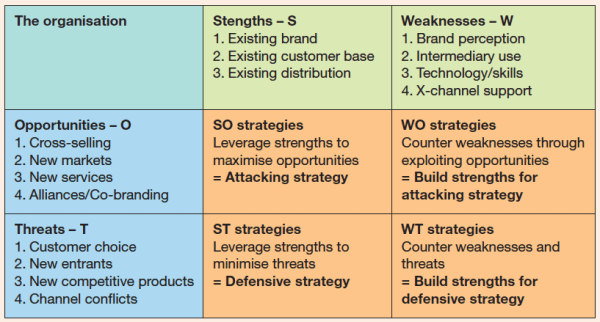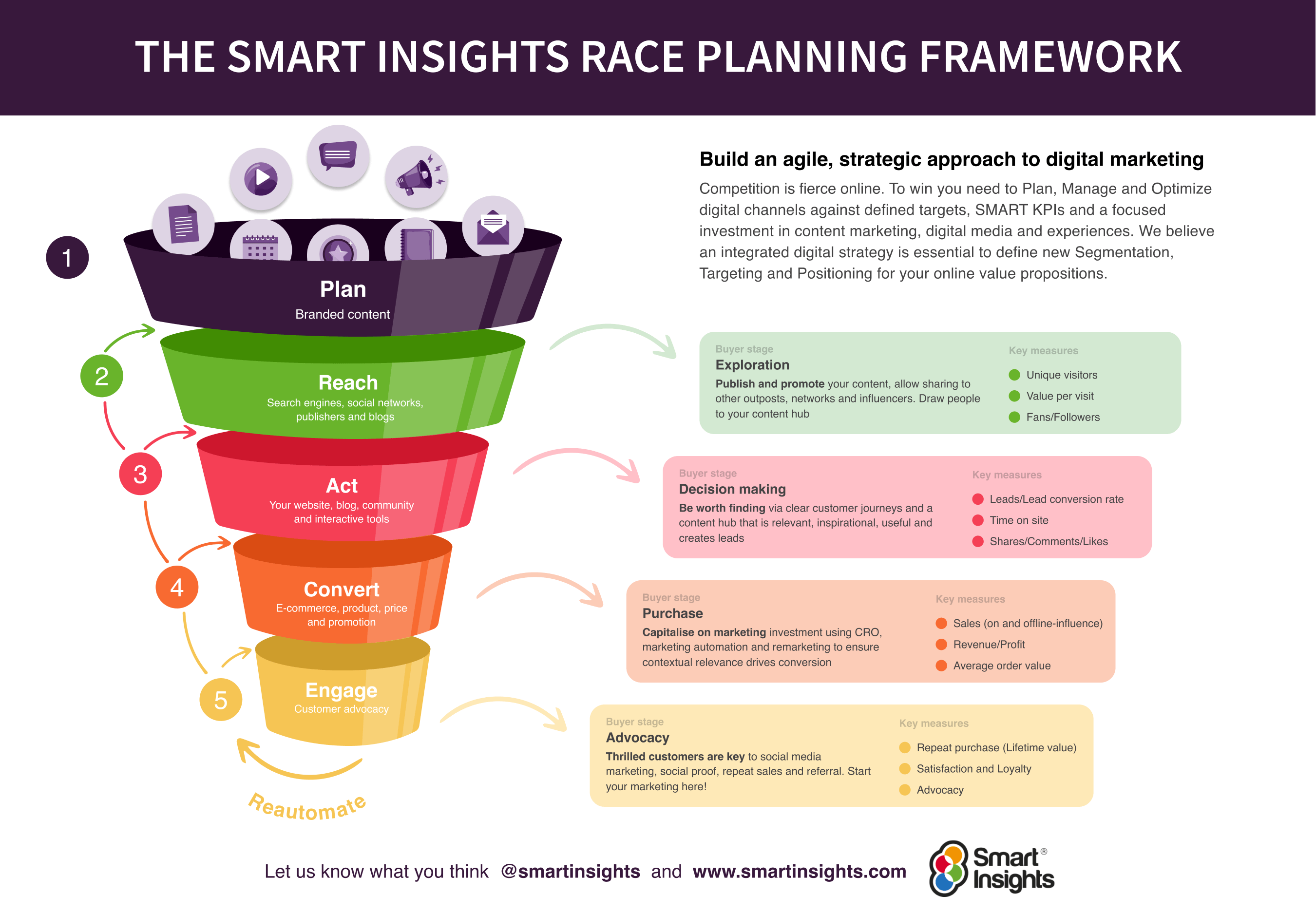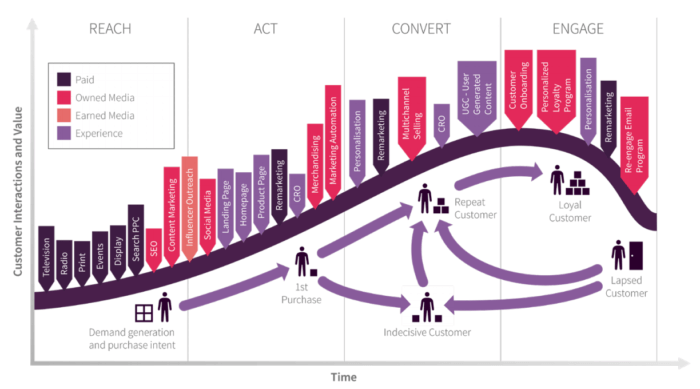Our guide to creating a SWOT analysis to define digital strategy using the TOWS technique
A SWOT analysis is an essential part of any business or marketing plan. It allows you to create a plan of action based not on what you’re interested in doing or on your gut-feel, but what you need to do given the situation in the marketplace. It considers your capabilities for marketing against competitors plus looks at opportunities created as new technologies are introduced.
What is a SWOT?
As you’ll know it’s a 2 X 2 matrix summarising the internal Strengths and Weaknesses against external Opportunities and Threats. These external opportunities and threats are available to all competitors in the marketplace.
Why is SWOT analysis useful?
When creating a digital marketing plan, SWOT analysis is an essential step. I think it’s sometimes seen as an academic exercise and there’s the feeling that the time should be spent on improving the execution of the tactics like email or search marketing or improving the site. But, SWOT analysis will give you a strategic view of the main opportunities and challenges available from online marketing.
The high-level view will help you see the most important issues which need to be managed in order to achieve your business objectives.
While any form of SWOT analysis is better than none, I’ve found through working on many SWOT, that the technique works best for digital marketing when these 5 issues are reviewed when creating the SWOT. I’d advise that you make sure that your SWOT or SWOTs are:
1. Based on existing SWOT for the business
Before looking at SWOT for your marketing strategy, you need to look at the broader picture. What are the key issues that need to be managed for the business to be successful? As Malcolm MacDonald has recommended this should ideally not be too generic, but should focus on a particular market or customer segment.
We’ve got marketing tools and templates to support you at every stage of developing your winning marketing strategy. From benchmarking, to competitor analysis, audit, and setting goals, our tried-and-tested marketing solutions are informed by marketing experts you can trust.
All our marketing solutions are integrated across our acclaimed RACE Framework funnel, shown below. Our RACE free digital marketing plan template helps marketers apply data and analysis to improve their marketing performance.
Join Smart Insights as a Free Member for instant access to our free digital marketing plan template to hone your skills and drive the results you need.
2. Uses a TOWS matrix approach
When I develop SWOT, I find the so-called TOWS matrix approach invaluable – wish there was a more sensible name for it. The power of the TOWS matrix format is in the way it not only gives a review, but also helps you create and summarise strategies to improve the market.
Oftentimes SWOT are put in the appendix of a report or on the shelf and do not drive action, but the TOWs approach integrates the SWOT into the whole strategy process to help create a plan.
The example below shows how the TOWS matrix reviews not only the situation in internal strengths and weaknesses and external opportunities and threats around the edge, but also shows 4 box for creating strategies to succeed in the marketplace.
3. Is created specifically for online including multichannel marketing
The internet and other digital technology offer new opportunities and threats, so creating a SWOT specific to the internet is important to help meet this challenge.
But your internet SWOT shouldn’t consider online channels in isolation – customers have a choice of multiple channels. So your SWOT should consider how the internet presence of a company integrates with the offline world too.
Customers often need and want to contact a company by phone, callback and companies still need to use offline communications like print, direct mail and TV in many cases.
Our omnichannel planning framework, RACE, enables marketers and managers to plan, manage and optimize their key marketing channels and platforms in one clear, streamlined structure.
Integrated across the customer journey touchpoints of reach, act, convert and engage, the RACE Framework is proven to help you drive growth in the areas you need, so you can win more customers.
4. Considers key digital marketing activities within SWOT analysis
The internet-specific SWOT can be reviewed in the main areas of online marketing activity, namely areas of customer acquisition, conversion, retention and growth. You can create a separate SWOT for each of these, particularly relevant if you’re in charge of one area. But what I recommend is just coding up the findings so you can see which activities they refer to. I prefix the different elements with part of our RACE framework:
R: Reach – reaching customers and raising awareness on your site or other sites
A: Act – achieving interaction
C: Convert – conversion to sale online or offline
E: Engage – long-term relationship building with customers
G: Governance – issues which affect capability to deliver like resource
5. Have further details on specific markets as required by the size of the company
As a piece of advice, I’d say breaking the SWOT down further may be useful for very large companies. Here, a SWOT will be developed for a specific country or type of country – e.g. mature against emerging markets. Alternatively, a SWOT can be created for key customer groups, e.g. larger organizations against smaller organizations for a B2B company.
Through SWOT and TOWS marketers gain a wealth of insight to inform their strategy. I hope you find my overview of SWOT useful. Let me know any tips you have found in creating a SWOT or if you don’t use them what you do instead!






